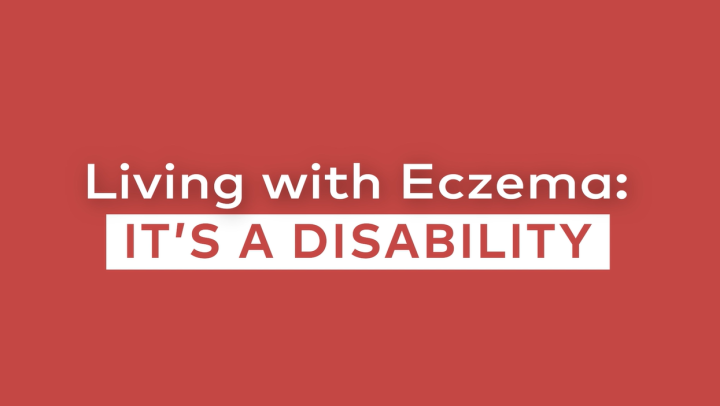
Eczema is a very common skin condition seen frequently in the United States. The term “eczema” encompasses several subtypes of skin rashes, with the most common being atopic dermatitis. Atopic dermatitis is a chronic inflammatory skin condition often starting in early childhood. The disease is considered multifactorial, meaning it’s caused by a combination of genetic, environmental and immune-related factors. Most patients with atopic dermatitis experience itchy rashes with dry skin and high levels of IgE, or infection-fighting antibodies, in the blood.
Because eczema is multifaceted and can vary greatly in severity and symptoms experienced, a thorough understanding of treatment options is important.
Dermatologists classify the condition based on the extent of skin affected by rashes as well as how intense the symptoms are. Depending on the skin tone, rashes can appear red, purple, brown, or gray. Rashes, thickness and swelling can vary in severity, but patients with moderate to severe eczema will usually experience most or all of these reactions on the skin.
While we don’t know exactly what causes such severe reactions in the skin, many of the existing treatments for atopic dermatitis aim to treat dysregulation of the immune system, when the immune system produces too much inflammation in the body. They also aim to improve the skin’s ability to protect against the outside environment — strengthening the skin barrier — making it less susceptible to potential irritants from the outside.
Depending on the severity and nature of the condition, possible treatments include one or more of the following:
- over-the-counter moisturizers and topical or oral steroids
- oral antihistamines
- intramuscular steroid injections
- oral or topical antibiotics, antiviral medications, or antifungal medications
- topical non-steroidal anti-inflammatory drugs (NSAIDs)
- calcineurin inhibitors (TCI)
- PDE4 inhibitors (PDE4)
- Janus kinase (JAK) inhibitors
- bleach baths
- phototherapy
- oral medications
- biologic medications
Topical steroids are commonly prescribed for patients with moderate to severe atopic dermatitis. These medications are designed to calm down the immune dysregulation present in the affected skin. Use of topical steroids should be limited to areas where the rash is present. Skin on various parts of the body often varies in thickness, and this often dictates the strength of topical steroids that are prescribed. For areas with thin skin, such as the face and genital area, milder topical steroids or topical NSAIDs are usually prescribed. Oral steroids and intramuscular steroid injections can also be given based on the severity and extent of involvement of the rash.
Oral or topical antibiotics, antiviral medications and antifungal medications are also prescribed for patients with moderate to severe atopic dermatitis. When dealing with a compromised skin barrier, there is a higher chance for bacteria, viruses or fungi to cause a skin infection. Furthermore, scratching as a result of atopic dermatitis can cause skin infections due to frequent contact of the fingers to the skin. The infections cause further dysregulation of the immune cells, exacerbating the rash associated with atopic dermatitis.
There are also several systemic treatment options aimed at stabilizing the immune dysregulation in the skin. Phototherapy, the use of various wavelengths of ultraviolet (UV) light, is often recommended for patients with more widespread atopic dermatitis. Another option for patients with more severe disease is an oral medication that suppresses larger subsets of the immune system. These medications include cyclosporine (Neoral), methotrexate (Trexall), azathioprine (Imuran) and mycophenolate mofetil (CellCept).
“Biologics” used to treat atopic dermatitis are tailor-made to suppress portions of the immune system responsible for allergy-related conditions. This customized approach targets the specific immune cells dysregulated in the skin. Biologic medications that have shown efficacy in atopic dermatitis include omalizumab (Xolair), dupilumab (Dupixent), upadacitinib (Rinvoq), and tralokinumab (Adbry). Research efforts are actively underway to discover newer and more specifically targeted biologic medications.
Regardless of severity, it’s important to preserve and protect the existing barrier function of the skin. Bathing should be limited to once daily at lukewarm temperatures, as frequent bathing strips natural moisture out of an already-compromised skin barrier. Soaps that are scent-free and dye-free are less likely to irritate the skin. Finally, application of moisturizers or emollients to slightly damp skin is imperative to seal in additional moisture and add an additional layer of protection to the compromised skin layer.
In short, there are a multitude of treatment options available for patients with moderate to severe atopic dermatitis. Successful treatments often range from a combination of over-the-counter and prescription medications, as well as at-home therapies. Combinations of treatments are recommended by dermatologists who evaluate the severity of the condition and suggest treatments based on numerous factors. Visiting your dermatologist to discuss your condition, as well as the benefits and risks of each treatment option, is often the first step to controlling and maintaining healthy skin.


















